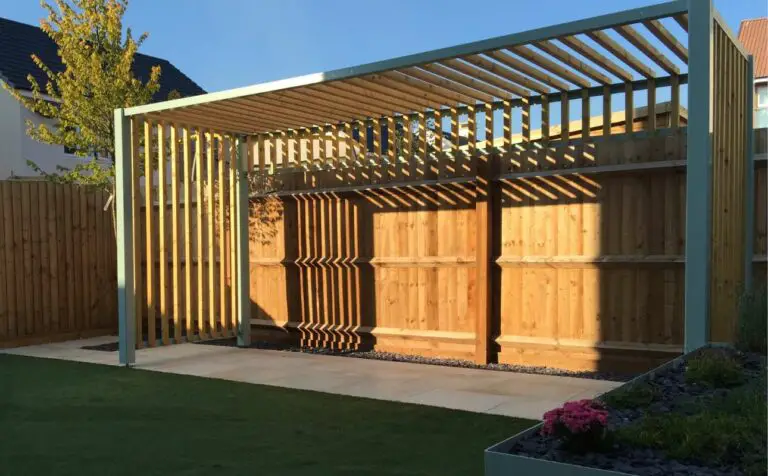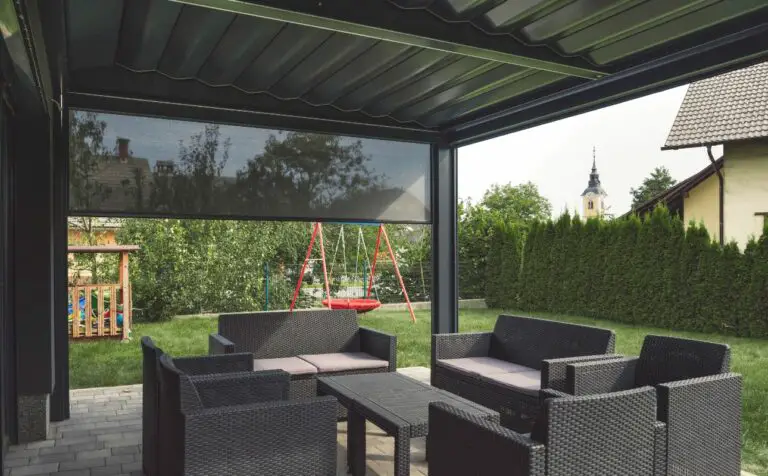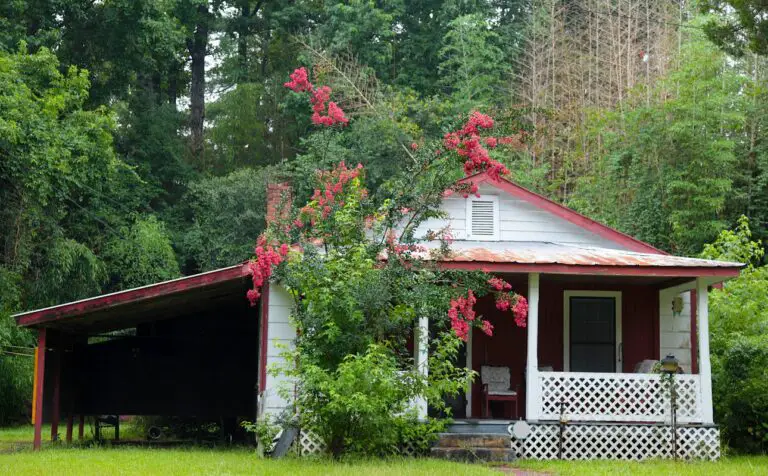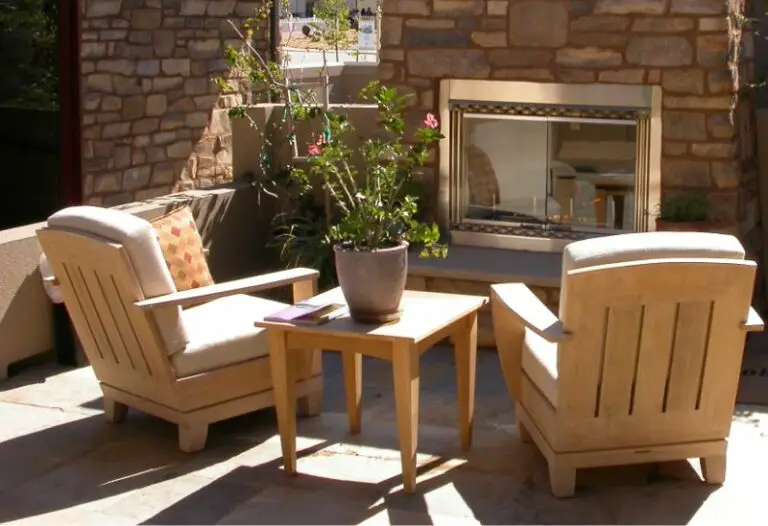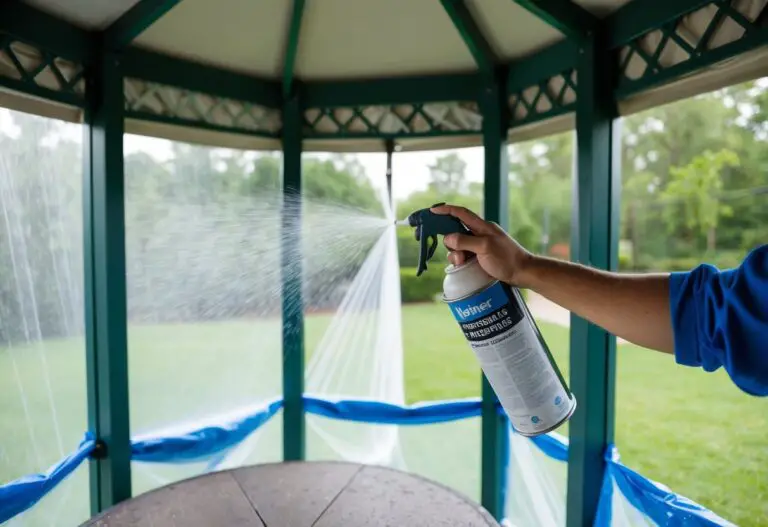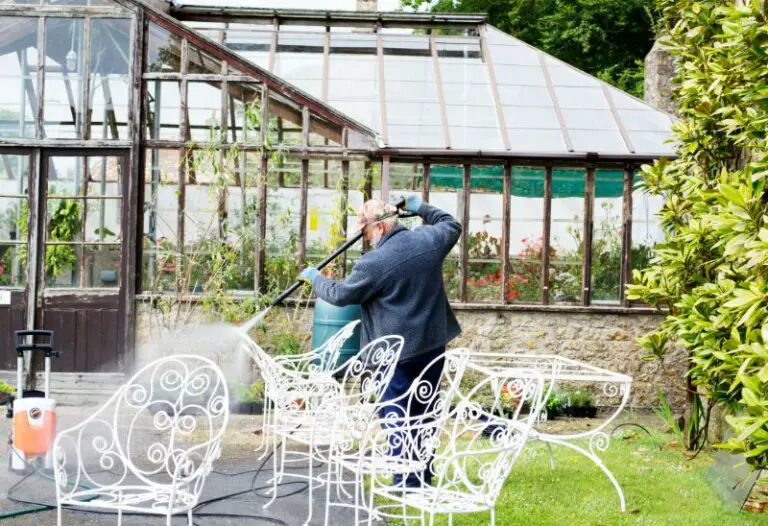Pergolas and arbors are both popular outdoor structures that can add beauty and functionality to your backyard or garden.
While these structures share some similarities, they also have distinct differences that can make one more suitable than the other for your specific needs.
In this article, we will discuss their differences and similarities, and help you choose the right structure for your outdoor space.
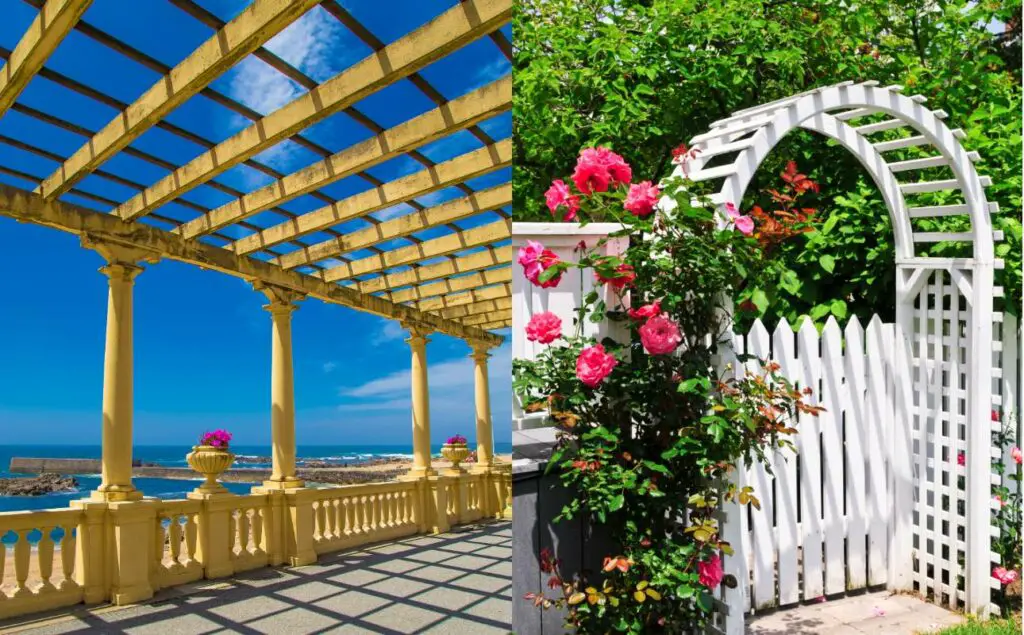
Comparison Chart: Pergola vs Arbor
This comparison chart outlines the key differences between pergolas and arbors. Use this chart to help you decide which structure is best for your outdoor space based on your specific needs and preferences.
| Pergola | Arbor | |
| Structure | A larger structure consisting of posts, beams, and rafters | Smaller structure with an arched or flat top |
| Size | Provides ample shade and space for outdoor living | Used as a focal point in a garden or entryway to a path |
| Design | Available in a variety of designs and styles | Typically more decorative and used to showcase plants |
| Function | Can create an outdoor living area, dining area, etc. | Primarily provides shade and decorative element |
| Cost | Generally more expensive than arbors | Generally less expensive than pergolas |
Pergolas vs. Arbors
- Size Comparison
Pergolas are typically larger than arbors and can range in size from a small structure that covers a seating area to a larger structure that covers an entire outdoor living space.
Arbors, on the other hand, are typically smaller and are designed to add a decorative element to a garden or outdoor space.
- Purpose Comparison
Pergolas are designed to provide shade and create outdoor living spaces, such as outdoor kitchens, dining areas, and seating areas. They can also be used to support climbing plants such as roses or vines.
Arbors, on the other hand, are primarily decorative in nature and are designed to add an element of beauty and elegance to a garden or outdoor space. They can also be used to support climbing plants, but are not typically used for functional purposes such as providing shade or creating outdoor living spaces.
- Design Comparison
Pergolas and arbors come in a variety of designs and styles, from simple and modern to ornate and traditional. Pergolas typically have a larger and more open design, with posts, beams, and rafters that support an open roof.
Arbors, on the other hand, typically have a smaller and more enclosed design, with lattice panels on the sides and an arched or flat top.
- Cost Comparison
The cost of a pergola or arbor can vary widely depending on the size, materials used, and design.
Pergolas are typically more expensive than arbors due to their larger size and more complex design. The cost of a pergola can range from a few hundred dollars for a small structure made of vinyl to several thousand dollars for a larger structure made of wood or metal.
Arbors, on the other hand, are typically less expensive than pergolas, with costs ranging from a few hundred dollars for a small structure made of wood or vinyl to around $1,000 for a larger structure made of metal.
- Maintenance Comparison
Both pergolas and arbors require regular maintenance to ensure their longevity and functionality. Pergolas typically require more maintenance than arbors, as they are larger and have more components.
Both structures require regular cleaning, sealing, and repairs as needed to protect them from weathering and damage.
Wood structures require regular sealing to protect them from rot and insect damage, while metal structures require rust-resistant coatings to protect them from rust and corrosion.
Vinyl structures require regular cleaning and inspection for any damage or cracking.
Pergolas (Types, Benefits, Drawbacks)
Pergolas are outdoor structures that consist of posts, beams, and rafters, and are designed to provide shade and add an element of beauty and elegance to your backyard or garden.
- Types of Pergolas
There are several types of pergolas, including
- Traditional pergolas feature four vertical posts and an open roof with lattice panels.
- Gazebo pergolas are solid roofs designed to provide more shade and protection from the elements.
- Arbored pergolas are designed to support climbing plants such as roses or vines and feature an arched or flat top.
- Attached pergolas are attached to a building, such as a house or a garage, and can provide a seamless transition between indoor and outdoor living spaces.
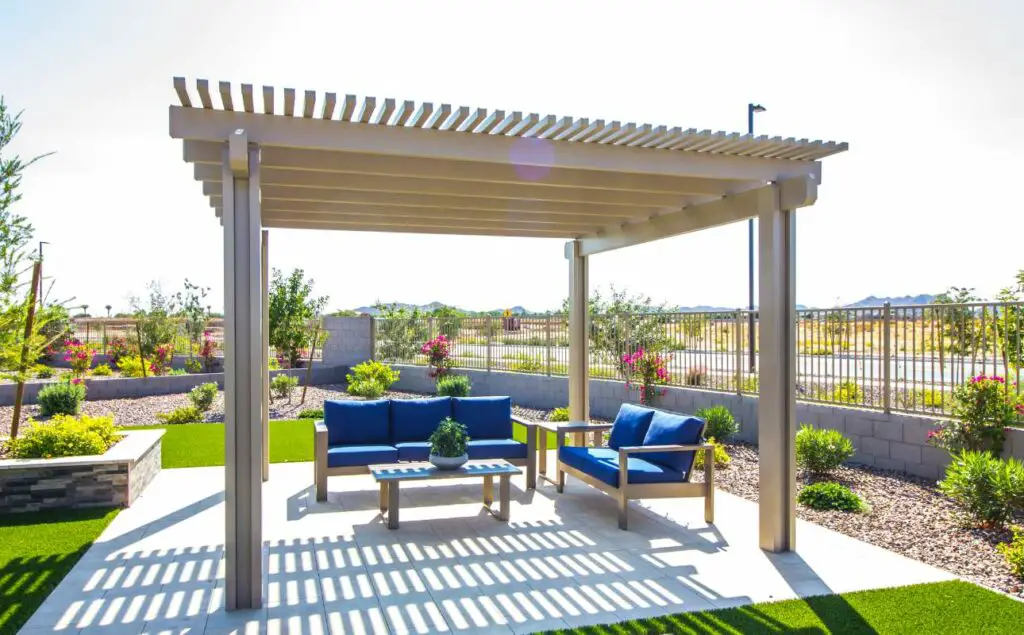
- Benefits of Pergolas
Pergolas offer several benefits, including
- Pergolas provide shade and protection from the sun, making them an excellent addition to outdoor living spaces.
- It can add an element of beauty and elegance to your backyard or garden and can be customized to match your personal style.
- The Pergolas can be used to create outdoor living spaces, such as outdoor kitchens, dining areas, and seating areas.
- It also increases the value of your property by enhancing its curb appeal and creating additional living space.
- Drawbacks of Pergolas
While pergolas offer many benefits, there are also some drawbacks to consider, including
- Pergolas are expensive to build or install, depending on the size, design, and materials used.
- It requires regular maintenance, such as cleaning, painting, and sealing, to keep them looking their best.
Arbors(Types, Benefits, Drawbacks)
Arbors are outdoor structures that typically feature an arched or flat top with lattice panels on the sides, and are designed to add a decorative element to your garden or backyard.
- Types of Arbors
There are several types of arbors, including
- Classic arbors are arched or flat tops and lattice panels on the sides.
- Gazebo arbors are solid roofs and are designed to provide more shade and protection from the elements.
- Wall-mounted arbors are attached to a building, such as a house or a garage, and can provide a seamless transition between indoor and outdoor living spaces.
- Pergola arbors are designed to support climbing plants such as roses or vines and feature an open roof with lattice panels.
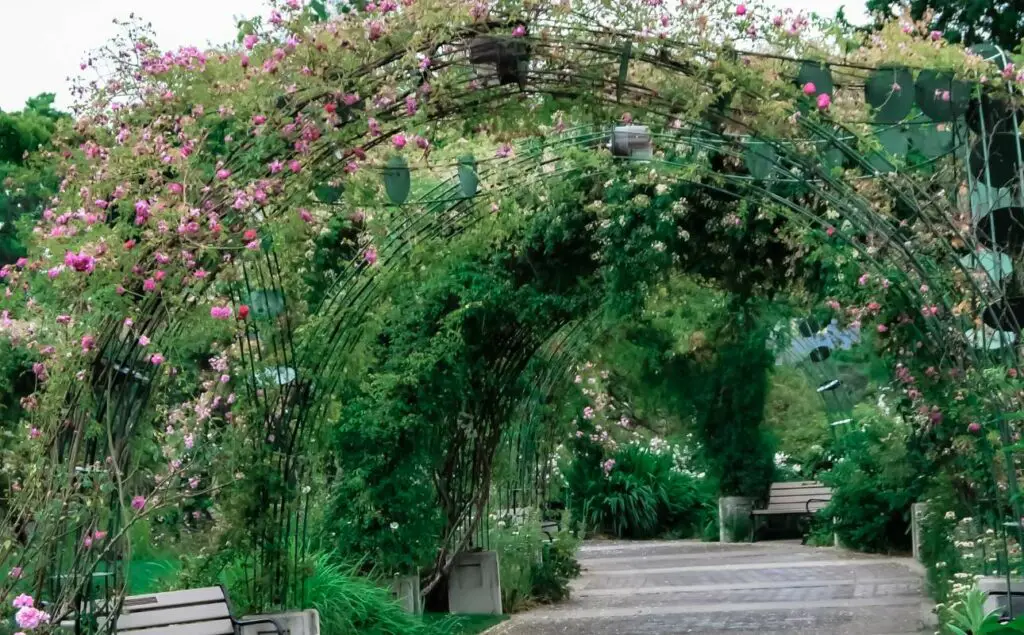
- Benefits of Arbors
Arbors offer several benefits, including
- Arbors can add an element of beauty and elegance to your backyard or garden and can be customized to match your personal style.
- This can support climbing plants such as roses or vines, adding an extra layer of beauty and interest to your garden.
- It also is used to create a sense of privacy in your outdoor space, by blocking the view of neighbors or passersby.
- Arbors can increase the value of your property by enhancing its curb appeal and creating additional living space.
- Drawbacks of Arbors
While arbors offer many benefits, there are also some drawbacks to consider, including
- Arbors provide limited shade compared to larger structures such as pergolas, which may not be sufficient for those looking for significant shade coverage.
- This is primarily decorative in nature and do not offer as much functionality as other outdoor structures, such as pergolas.
How to Choose the Right One?
Pergolas and arbors can be a beautiful and functional addition to your outdoor space, but choosing the right one can be overwhelming. There are many factors to consider when making your decision.
- Purpose and Function
When choosing a pergola or arbor is its purpose and function. Are you looking to create an outdoor living space, a dining area, or a place to entertain guests? Or do you simply want to add a decorative element to your garden?
Understanding the purpose and function of the structure will help you determine the size, location, and design of your pergola or arbor.
- Location
Is it going to be freestanding or attached to a building? Will it be in a sunny or shady area? Will it be near a pool or other water feature? The location of the structure will impact its size, shape, and design, as well as its overall functionality.
- Size and Shape
If you are looking to create an outdoor living space, you will need a larger structure than if you are simply adding a decorative element to your garden.
The shape of the structure can also impact its functionality, as a pergola with a solid roof will provide more shade and protection than an arbor with an open roof.
- Design and Style
The design and style of your pergola or arbor should complement the overall aesthetic of your home and outdoor space. Consider the materials, color, and texture of the structure, as well as any additional features such as lighting or privacy screens. The design and style of the structure can impact its overall functionality and curb appeal.
- Budget
The cost of a pergola or arbor can vary widely depending on the materials used, size, and design. It’s important to set a budget before you start your project and stick to it. Keep in mind that a more expensive structure may be more durable and require less maintenance in the long run.
- Climate
The climate of your area should also be considered when choosing a pergola or arbor. If you live in a hot and sunny area, you may want to choose a structure with a solid roof to provide more shade and protection from the sun.
If you live in an area with high winds or heavy snowfall, you may want to choose a structure that is more durable and can withstand harsh weather conditions.
The Bottom Line
Pergolas are larger and more functional, designed to provide shade and create outdoor living spaces, while arbors are smaller and primarily decorative in nature.
Pergolas have a more open design with posts, beams, and rafters supporting an open roof, while arbors have a smaller and more enclosed design with lattice panels on the sides and an arched or flat top.
Both structures require regular maintenance to ensure their longevity and functionality, but pergolas typically require more maintenance than arbors.
With the right choice and proper installation and maintenance, either structure can enhance the beauty and functionality of your outdoor living space for years to come.
